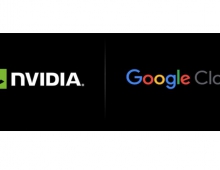
Google Announces New Support Plan For Chromebooks, Higher Prices For Upgrades
Google shared new updates to its Automatic Update Expiration date policy, new devices for 2020 with longer life and more capabilities including touch screens and improved UI, and a new price for the Chrome Education Upgrade.
Chrome Education Upgrade unlocks the full capabilities of Chrome OS and frees up IT resources. Managed access puts admins in control of what users can access and how the devices can be used. It simplifies device deployment with the help of a cloud-based command center where admins can manage settings and oversee all devices in their fleet. It also provides advanced security controls, which allow IT admins to disable devices remotely, set up persistent enrollment to prevent unrestricted access or set data to remove at the end of each session.
Google today announced changes to the Chrome OS Automatic Update (AUE) policy, and will provide security and feature updates for a longer period.
Automatic updates provide important fixes for security, stability, and new features. With two copies of the operating system on each device, one can be silently updated without disrupting your work. When Google first launched Chromebooks, devices only received three years of automatic updates. Over the years, Google has been able to increase that to over six. Last fall, the company extended AUE on many devices currently for sale, in many cases adding an extra year or more before they expire. And now, devices launching in 2020 and beyond will receive automatic updates for even longer. The new Lenovo 10e Chromebook Tablet and Acer Chromebook 712 will both receive automatic updates until June 2028.
To support this greater lifespan, Google has also increased the list price of the Chrome Education Upgrade from $30 to $38. You can purchase Chrome Education Upgrade through your reseller to manage your devices today.
Google recently rolled out improvements to the admin console, including 10 times faster page loads and search functionality. In Google Admin Console, you’ll see a new Devices page where you can search and filter by device, and see the Automatic Update Expiration dates for the devices in your school. All app management for users, browsers, managed guest sessions, and kiosks is now part of a single page where you can manage apps and extensions from the Google Play Store, Chrome Web Store, and self-hosting side by side. You can also pin websites to the taskbar on Chrome OS and provision progressive web apps (PWAs) for your users—all you need to enter is the URL. And in the Settings page, you can manage native printing options more closely with new controls for setting defaults and restrictions on duplex, color and more.
The newest Chromebooks coming in 2020 include the ASUS Chromebook Flip C214 and Lenovo 500e. Both come with a rugged design, durable touchscreens, built-in styluses and a 360-degree hinge. And with both a user-facing and a world-facing camera, students can collaborate in Hangouts Meet, then flip their screens around to shoot videos for class projects.
Devices like the Pixelbook Go and the new Lenovo Chromebook 10e tablet give teachers and students access to creative tools. Google Slides and Docs make it easy to work together with podcasting, video or coding apps, all of which can be found on the Chromebook App Hub.




















